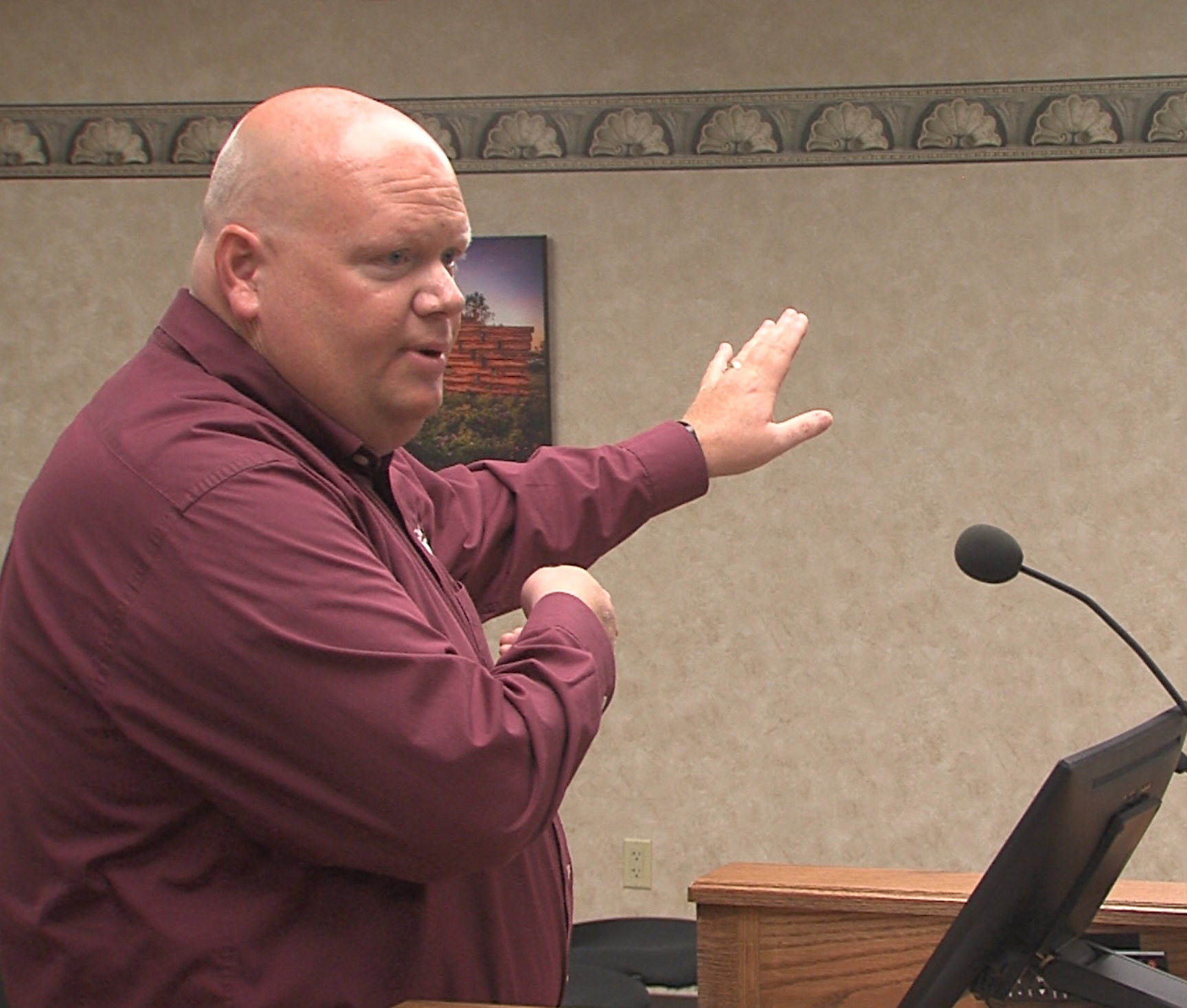By BECKY KISER
Hays Post

Six of the city of Hays’ 32 municipal water production wells are slated for rehabilitation this year.
Hays city commissioners are expected to award the low $67,230 bid to Layne Christensen Co., Kearney, Neb., during their Thursday meeting.
Regular maintenance is performed on all the city’s water wells, according to Jeff Crispin, water resources director, but at some point a professional well service company must be used for a more extensive procedure.
Crispin likes to compare the wells’ operation to that of a drinking straw.

“If you pinch off the bottom of that straw, or you put something in place in the bottom of that drink, it’s harder for you to get that drink up and out,” Crispin said to city commissioners.
Four of the six wells — YE-1, C-20T, S-8, S-16, S-19, and S-23 — are located in the Smoky Hill River well field south of town near Schoenchen. C-20 is located near 16th and Milner in the middle of Hays. YE-1 is in northwest Hays near Enersys.
There’s no single answer for how often a water well should be professionally rehabilitated.
“The usage, media and formation are all factors that play into how often we should have it completed,” according to Crispin. “We have some wells that we don’t use much, based on a right, and how that well performs means we may use other wells more extensively. But that doesn’t mean every year we need to come back to do six wells every year.”
Crispin plans to establish a performance baseline report with video for each of the city’s water wells similar to what has been done for sewer line cleaning.
“The city in 2013 started sewer line cleaning on a regular basis. We created a baseline video — a baseline cleaning — so we know that in 2013 this area of town was hit.
“As we move forward, we continue this process and we make sure our wells are all performing as they should.”
Routine maintenance by city staff takes a couple of days.
“They go through the process of acidizing that well and then the next day disinfecting that well. We’re just basically putting the fluid into the ground, pulling it back out, pushing it back in. We’re not getting down into that well and doing methods a professional company would be able to do.”
The last major rehabilitation on the six selected wells was completed between 1998 and 2007. The Smoky well field was expanded in 2007.

Well rehabilitation is periodically required during the life of a well because groundwater contains bacteria and minerals which cause well plugging. Screens, gravel pack and formations may become blocked, reducing the capacity and efficiency of the well. The buildup reduces the amount of water that can be pumped to the surface. The contractor will pull the pumps for inspection and make repairs as needed.
“The contractor will be required to do a performance test first so you know what your baseline is,” Crispin explained as he described the process.
“A camera will be lowered into the well to inspect the screens at the bottom of the well. High pressure jetting, chemical treatment and mechanical methods will be used to clean the screens and formations at the bottom of each well. Once complete, the well will be performance tested and they will provide us an efficiency report compared to ‘like-new status.’ ”
Rehabilitating water wells extends the life of each well, reduces electricity, and the costs to produce water.
“We have enough wells that we can shut down the rehabbed wells for a few days,” Crispin assured commissioners. “Obviously, we’re not running all of our production wells at the same time.”


